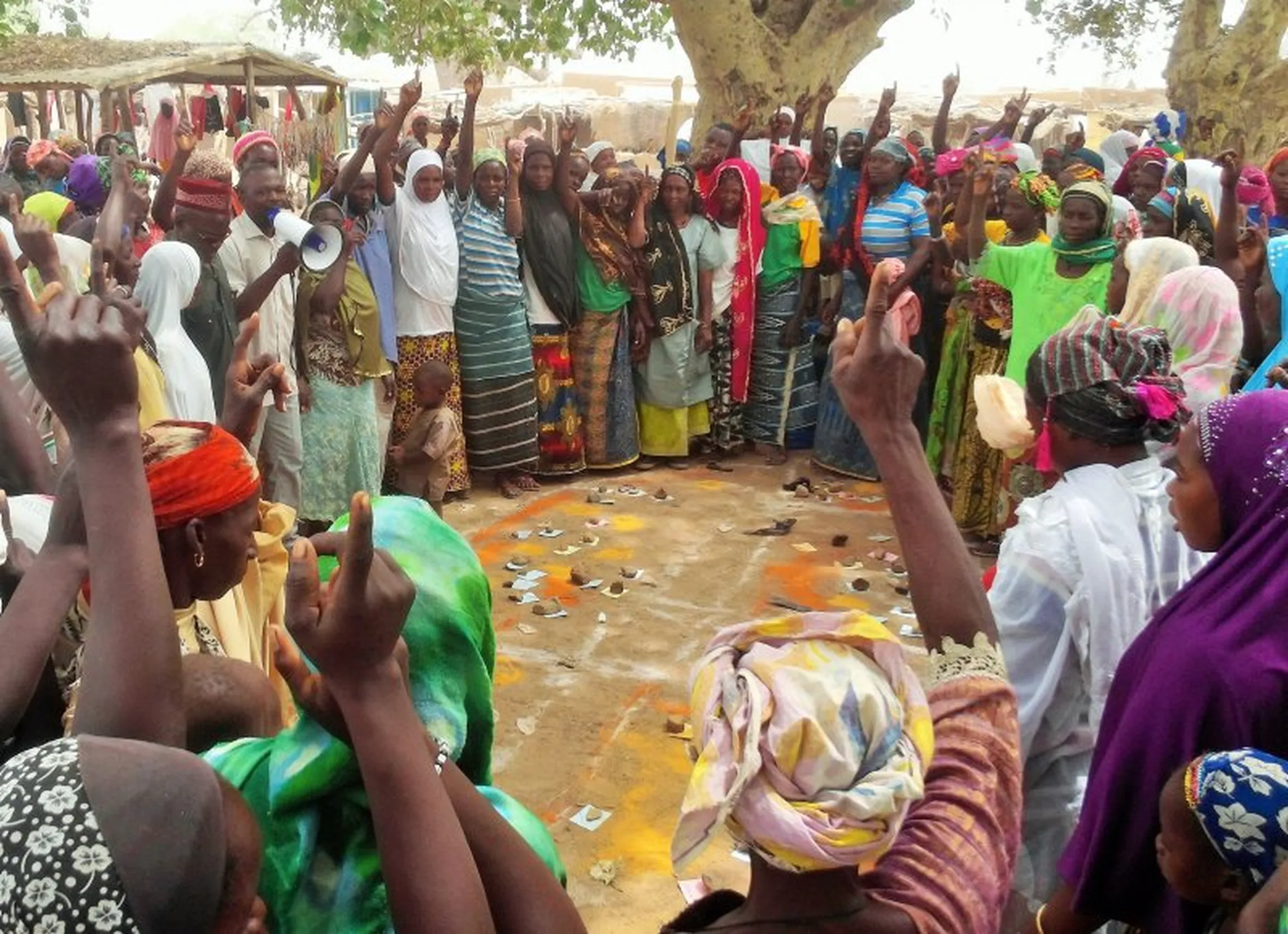The power of community involvement unleashed

When sanitation becomes everybody’s responsibility, we make greater strides in realising healthier, happier, and more dignified lives. Take for example SNV Burkina Faso and UNICEF’s implementation of a community-led total sanitation (CLTS) approach in the eastern region of Burkina Faso: now home to 40 ODF-certified villages, and more than 5,000 newly self-built latrines.
The sanitation crisis
Similar to many sub-Saharan African countries, Burkina Faso faces a sanitation crisis. Few people have access to adequate sanitation: 13.4% in rural areas, and 36.8% in urban areas.[1] Slow progress is being made to expand access: 8% in 1990, up to only 20% in 2015.[2] And, defecating out in the open continues to be a common practice (55% nationwide, 75% in rural areas).[3] At its current pace, realising SDG 6 by 2030 appears to be far-fetched. Or so it appears.
Revisiting business-as-usual approaches
Time and again, solving the sanitation crisis in the country has focused on business-as-usual approaches. The hand out of subsidies — including to those individuals who are willing to pay for a reliable and safe service — creates unnecessary dependency, and takes away much-needed resources from the extremely poor.

Aminata KONKOBO from SNV Burkina Faso presents project implementation process.
As such, mobilising the leadership and involvement of willing and relatively can-afford communities to “take charge of their own development” is essential.

Villagers in Kompienga volunteering to build community latrines.
A subsidy-free approach to improving sanitation? Most definitely!
Since September 2015, and with UNICEF, SNV Burkina Faso has been piloting a community-led total sanitation (CLTS) approach across 167 villages in the eastern region of Burkina Faso — minus subsidies!
Our programme’s five-pronged approach entailed:
raising awareness on the dangers of open defecation through community dialogue, and various outreach materials;
supporting communities in the development of their own roadmap (action plan) to achieve ODF certification;
strengthening local leadership and ownership of CLTS committees, natural leaders, customary and religious authorities to sustain achievements well beyond the project duration;
promoting local knowledge in realising sanitation facilities; and
partnering with local public officials to support communities in sustaining sanitation systems.
Within the region, 50,000 people are now using sanitary latrines and embracing hygienic practices!
So far, our experience is showing that an empowered community yields positive sanitation results. More than 5,000 latrines have been installed by community members. Of the 79 villages considered open defecation free, 40 villages have been formally certified. In these villages, handwashing with soap and water (or ash), using pots for children to relieve themselves, making sure that drinking water is stored safely, and keeping the environment clean, are fast becoming the norm.

Min. Niouga Ouedraogo hails self-built latrines as good example to replicate.
Besides progress being made at individual level, we are also seeing increased national government interest on CLTS approaches. During World Toilet Day 2017, key ministers and government officials visited Kalkouri: a village where our project is being implemented.

In front: Burkinabe ministers attend World Toilet Day 2017.
With our partners in local/national government, we join UNICEF in looking forward to another year of embedding community involvement, and finally making open defecation a thing of the past.

ODF awarding ceremony with key ministers, SNV and UNICEF.
Notes:
[1] Figures drawn from the 2016 report of the National Water Supply and Sanitation Program of Burkina Faso (PN AEPA).
[2] Figures drawn from the Joint Monitoring Programme for Water Supply and Sanitation by WHO/ UNICEF, 2016.
[3] Ibid.
This initiative forms part of the joint SNV Burkina Faso and UNICEF project, titled: Improving access to sanitation and hygiene using the CLTS approach in Eastern Region in Burkina Faso. Project information available here.